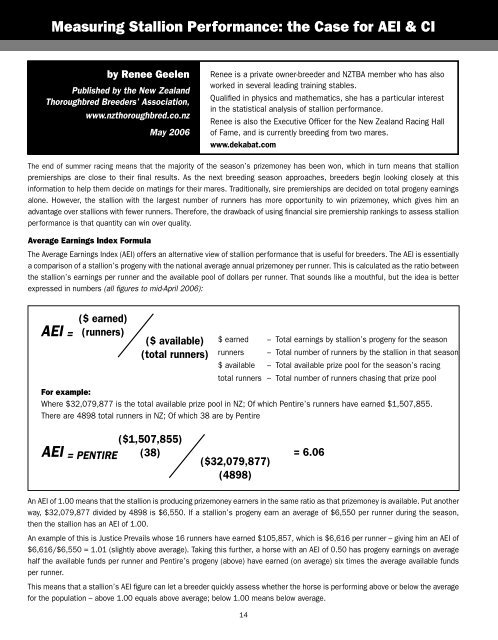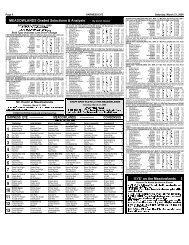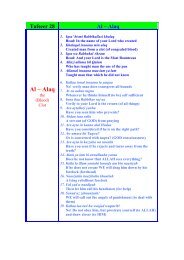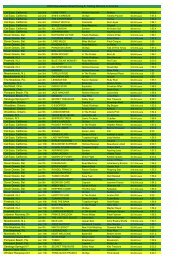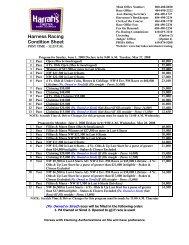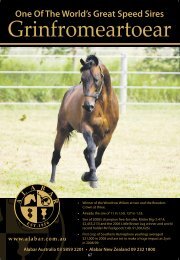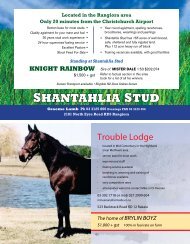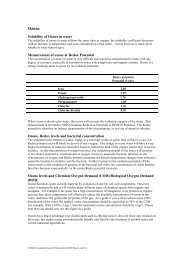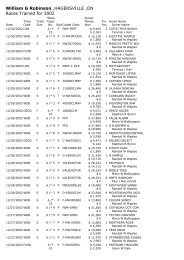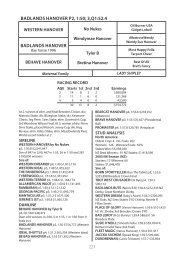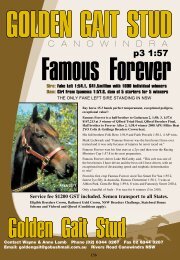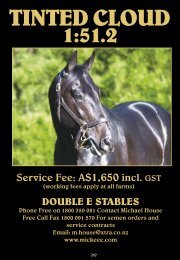Stallions - Harnesslink
Stallions - Harnesslink
Stallions - Harnesslink
Create successful ePaper yourself
Turn your PDF publications into a flip-book with our unique Google optimized e-Paper software.
Measuring Stallion Performance: the Case for AEI & CI<br />
by Renee Geelen<br />
Published by the New Zealand<br />
Thoroughbred Breeders’ Association,<br />
www.nzthoroughbred.co.nz<br />
The end of summer racing means that the majority of the season’s prizemoney has been won, which in turn means that stallion<br />
premierships are close to their final results. As the next breeding season approaches, breeders begin looking closely at this<br />
information to help them decide on matings for their mares. Traditionally, sire premierships are decided on total progeny earnings<br />
alone. However, the stallion with the largest number of runners has more opportunity to win prizemoney, which gives him an<br />
advantage over stallions with fewer runners. Therefore, the drawback of using financial sire premiership rankings to assess stallion<br />
performance is that quantity can win over quality.<br />
Average Earnings Index Formula<br />
May 2006<br />
Renee is a private owner-breeder and NZTBA member who has also<br />
worked in several leading training stables.<br />
Qualified in physics and mathematics, she has a particular interest<br />
in the statistical analysis of stallion performance.<br />
Renee is also the Executive Officer for the New Zealand Racing Hall<br />
of Fame, and is currently breeding from two mares.<br />
www.dekabat.com<br />
The Average Earnings Index (AEI) offers an alternative view of stallion performance that is useful for breeders. The AEI is essentially<br />
a comparison of a stallion’s progeny with the national average annual prizemoney per runner. This is calculated as the ratio between<br />
the stallion’s earnings per runner and the available pool of dollars per runner. That sounds like a mouthful, but the idea is better<br />
expressed in numbers (all figures to mid-April 2006):<br />
AEI =<br />
($ earned)<br />
(runners)<br />
($ available)<br />
(total runners)<br />
$ earned – Total earnings by stallion’s progeny for the season<br />
runners – Total number of runners by the stallion in that season<br />
$ available – Total available prize pool for the season’s racing<br />
total runners – Total number of runners chasing that prize pool<br />
For example:<br />
Where $32,079,877 is the total available prize pool in NZ; Of which Pentire’s runners have earned $1,507,855.<br />
There are 4898 total runners in NZ; Of which 38 are by Pentire<br />
($1,507,855)<br />
AEI = PENTIRE (38)<br />
($32,079,877)<br />
(4898)<br />
= 6.06<br />
An AEI of 1.00 means that the stallion is producing prizemoney earners in the same ratio as that prizemoney is available. Put another<br />
way, $32,079,877 divided by 4898 is $6,550. If a stallion’s progeny earn an average of $6,550 per runner during the season,<br />
then the stallion has an AEI of 1.00.<br />
An example of this is Justice Prevails whose 16 runners have earned $105,857, which is $6,616 per runner – giving him an AEI of<br />
$6,616/$6,550 = 1.01 (slightly above average). Taking this further, a horse with an AEI of 0.50 has progeny earnings on average<br />
half the available funds per runner and Pentire’s progeny (above) have earned (on average) six times the average available funds<br />
per runner.<br />
This means that a stallion’s AEI figure can let a breeder quickly assess whether the horse is performing above or below the average<br />
for the population – above 1.00 equals above average; below 1.00 means below average.<br />
14


